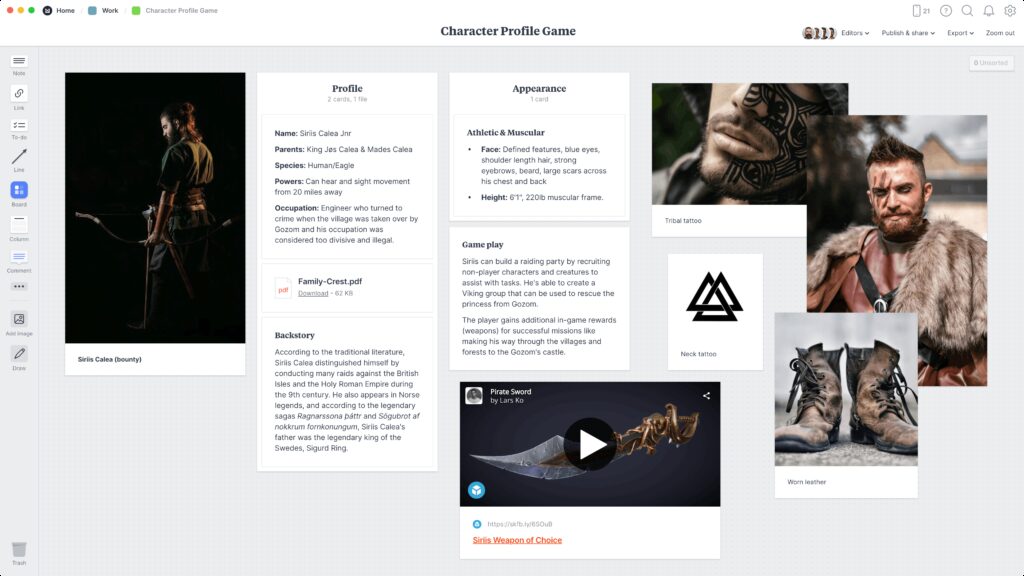The article explores the process of creating game characters, from conceptualization to implementation. Designers must consider the character’s backstory, personality, target audience, the game’s visual style, and gameplay mechanics to create a character that is both visually appealing and narratively relevant. Once the concept is established, the character’s visual design is developed, and a 3D model is created, which is rigged to enable the character to move realistically. Animators then create realistic movements, and finally, the character is integrated into the game, optimized for various devices and hardware configurations. Creating memorable game characters is a multidisciplinary process that requires a combination of skills and perspectives.
Character Design: Bringing Game Characters to Life
Game characters are the heart and soul of any video game. They are often the first and most lasting impression players have of a game. Good game character design is not simply about creating iconic or visually appealing characters, but about creating characters that are three-dimensional, relatable, and capable of carrying the narrative of the game. In this article, we will explore the process of character design, from concept to implementation.
Concept and Ideation
The first step in designing a game character is to develop a concept. This involves brainstorming and ideation sessions to develop the character’s backstory and personality traits. It is essential to consider the role the character will play within the game and how they will interact with other characters and the game environment. Designers should consider the game’s target audience, the visual style of the game, and the gameplay mechanics. This information will guide them in creating a character that is both visually and narratively relevant to the game.
Visual Design
Once the concept is established, the character’s visual design can begin. The designer will consider the character’s body shape, clothing, accessories, and color scheme. The visual design should reflect the character’s personality and backstory while being visually interesting and aesthetically pleasing. Generally, the designer will create concept art, which will serve as a blueprint for the character’s 3D model.
3D Modeling and Rigging
After finalizing the concept and visual design, the character is then modeled in 3D. A 3D model is a digital representation of the character that can be moved and controlled within the game. Modeling involves sculpting the character’s body, clothing, and accessories using software such as Maya or ZBrush. Once the model is complete, it is rigged, which means creating a skeletal structure for the character that enables it to move realistically. This rigging process is essential for creating smooth and natural animations.
Animation
Once the rigging is complete, the character can be animated. The animator will go through a series of steps to create realistic movements, such as walking, running, jumping, and fighting. The animator will adjust the character’s skeletal structure so that the 3D model moves fluidly and realistically. This process requires close cooperation between the animator and the rigging team to ensure that the animations are accurate and convincing.
Integration and Optimization
After the animation is complete, the character is integrated into the game. This involves importing the 3D model and animation files into the game engine and creating the necessary code to make the character move and interact within the game. This integration process requires knowledge of game engines, programming languages, and game development workflows.
Finally, the character is optimized to ensure it runs smoothly on various devices and hardware configurations. This involves reducing the number of polygons in the 3D model, simplifying the character’s textures, and optimizing the animations. This optimization process is essential for ensuring that the game runs smoothly and that players have a positive experience.
Conclusion
Creating memorable and engaging game characters is a challenging and rewarding process. It requires a multidisciplinary team, including concept artists, 3D modelers, riggers, animators, and programmers. Each team member brings unique skills and perspectives to the process, contributing to the character’s depth and complexity. The end result is a character that is not only visually stunning but also capable of carrying the narrative and emotional weight of the game.
